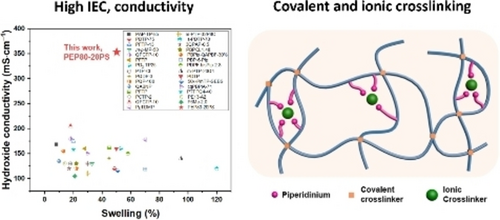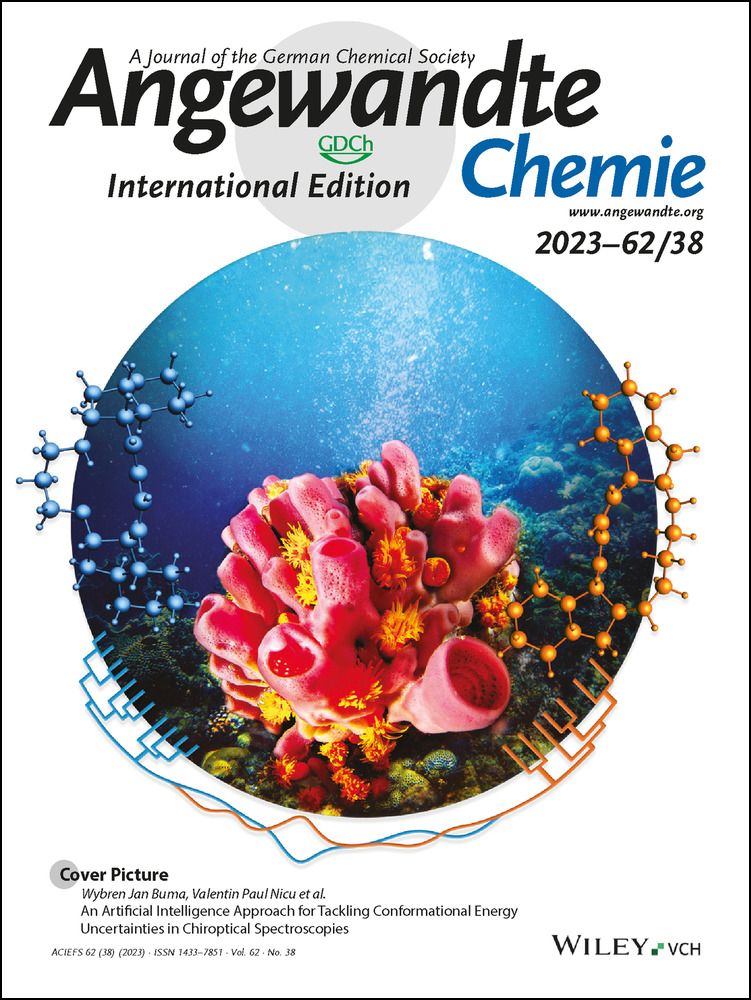Poly(Ethylene Piperidinium)s for Anion Exchange Membranes
Graphical Abstract
Ionic crosslinking is introduced into high-cationic-ratio AEMs to suppress high water uptake and swelling while further improving the hydroxide conductivity. This strategy limited the dimensional change and water uptake of the AEMs, with a high hydroxide conductivity observed. The chemical design used in this study presents a significant advancement toward developing AEMs showing high conductivity and stability simultaneously for fuel cell applications.
Abstract
The lack of anion exchange membranes (AEMs) that possess both high hydroxide conductivity and stable mechanical and chemical properties poses a major challenge to the development of high-performance fuel cells. Improving one side of the balance between conductivity and stability usually means sacrificing the other. Herein, we used facile, high-yield chemical reactions to design and synthesize a piperidinium polymer with a polyethylene backbone for AEM fuel cell applications. To improve the performance, we introduced ionic crosslinking into high-cationic-ratio AEMs to suppress high water uptake and swelling while further improving the hydroxide conductivity. Remarkably, PEP80-20PS achieved a hydroxide conductivity of 354.3 mS cm−1 at 80 °C while remaining mechanically stable. Compared with the base polymer PEP80, the water uptake of PEP80-20PS decreased by 69 % from 813 % to 350 %, and the swelling decreased substantially by 85 % from 350.0 % to 50.2 % at 80 °C. PEP80-20PS also showed excellent alkaline stability, 84.7 % remained after 35 days of treatment with an aqueous KOH solution. The chemical design in this study represents a significant advancement toward the development of simultaneously highly stable and conductive AEMs for fuel cell applications.
Conflict of interest
The authors declare no conflict of interest.
Open Research
Data Availability Statement
The data that support the findings of this study are available from the corresponding author upon reasonable request.





